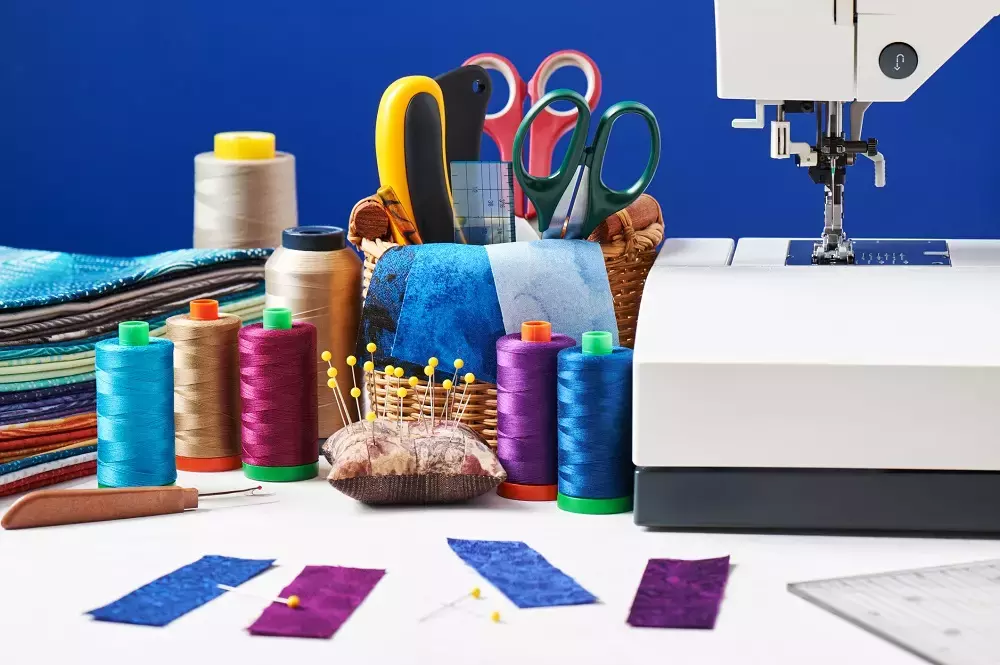The Sewing Essentials Every Beginner Needs
2019-07-19
Sewing essentials go far beyond thread, needles, and your machine. There's a ton of things that beginners need but often put off buying. This often results in a steeper learning curve than necessary. With the right tools, you can start working your way through projects quickly and with stunning results.
Fabric Scissors
There is no price tag for a high-quality pair of fabric scissors although you should be happy to know that you can get a pair of top-brand scissors for less than $30. Scissors should fit your hand well and have a downward angle to sit flush on a flat surface as you cut. Consider fabric scissors as crucial as sewing machines.
Embroidery Scissors
A short blade, and large finger holes, embroidery scissors are useful and don't result in hand fatigue. Use them to cut through the thread or trim down very tight areas of your craft. These are for precise cutting only and not for cutting out large chunks of fabric.
Pinking Shears
Shears differ from scissors in that they have mini-serrated edges that deter fraying and result in a cleaner finish than other scissors.
Rotary Cutter and Mat
The rotary system requires a cutter and a self-healing mat. You’ll want to ensure that your self-healing mat is a decent size, usually about 8 to 11-inches in width or height. Mats can make cutting a breeze and are essential for quilting.
Rotary cutters ensure straight lines, and they allow you to cut through several layers of fabric at once. You can efficiently and quickly cut out identical pieces of fabric in seconds. The only downside is that these blades do tend to dull quickly, so be sure to have blade replacements on hand as well.
Tape Measure
The tape measure is a must, and they're useful for more than creating garments. You'll want to use these to measure fabric regularly. You can quickly whip out your tape measure and ensure that you've pinned correctly before cutting any material at all.
Dryer Sheets or Parchment Paper
Really? Yes. Dryer sheets and parchment paper can help any beginner through learning how to read and use patterns. Sewing patterns come on fragile paper that tears as soon as you look at it. Instead of wrestling with the pattern, trace it onto a dryer sheet or parchment paper, then pin your newly traced pattern right onto your material. You can cut and sew around the pattern without ruining the pattern you purchased.
Magnetic Pin Holder
The original tomato pin cushion is not gone, but it is still a pain. Stopping what you're doing to extract a pin can cause your fabric to shift and impact the final result of your work. Instead, use a magnetic pin holder to store pins and even better to find lost pins that fell to the floor.
Quilters Ruler
Quilter's rulers make it easy to measure, mark, and cut out quilting pieces. These rulers come in a wide variety of shapes, colors, and sizes. Usually, they will have a large grid with additional angles or shapes printed onto them. These rulers seem daunting but can make quilting easy and fun.
Marking Tool
Marking tools can include washable markers, fabric pencils, and chalk. Using a regular pen on fabric is never a good idea, and chalk is generally inexpensive. Mark your fabric without ruining it by using proper marking tools.
Band-Aids or Thimbles
Band-Aids or plasters are vital to keeping blood off of your precious material. Sewing is a blood sport, and that's why thimbles and Band-Aids are so important. You'll stick yourself. You may even knick yourself with scissors. Keep these handy, just in case.
Seam Gauge
Possibly the most underrated tool in all of the crafting community. A seam gauge allows you to accurately measure hems, buttonholes, and of course, seams. The tool is a very simple ruler with a slider that will enable you to change the seam allowance that you're measuring.
Needle Threader
Hand stitching has its perks, and it can even save you a ton of time and frustration. That's if you can get your needle threaded. Needle threaders are small wire and foil contraptions that magically thread your needle quickly without any licking involved.
Fabric Stash
Probably one of the best parts of sewing is buying fabric. After a few years, you'll have an extensive collection at home. However, you can kickstart your stash now. Purchasing a yard or two of fabric can help build a stash and make it easy to make any project a little more personal. When buying fabric without any particular craft in mind, be sure to buy a variety of pieces of cotton, velvets, jerseys, and silks.
Sewing can seem intimidating at first, but GoldStar Tool has the essentials you need to get started. Also, check out our YouTube channel for informative sewing videos.





